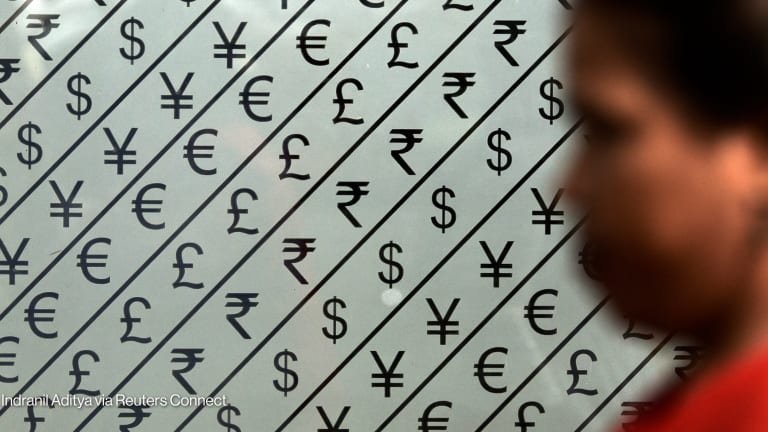Inside UNDP country strategies: Broad partnerships and winning countries
How are 1,500 partnerships pushing these country strategies through? Devex Analytics takes a deep dive into the 26 multiyear strategies.
The United Nations Development Programme works in about 170 countries and territories, and has been recognized as the second most transparent development agency in the world. Its key areas include sustainable development, resilience building, and democratic governance. UNDP releases strategic country-specific documents that outline its objectives and funding in the upcoming years. These country strategies provide an overarching framework of funding amounts, partners, and goals for a specific timeframe. Organizations can utilize these key insights in order to anticipate specific areas of funding flows. Out of the 25 donor agencies that published country strategies in 2019 and 2020, the U.N. published the most, constituting just over 25% of strategies posted. However, these strategies are often disaggregated. Devex Analytics takes a deep dive into data from 26 UNDP multiyear country strategies, published in 2019 and 2020: country focuses, the importance of broad partnerships, and future funding trends. All of these strategies are available on the Devex funding platform. Which countries receive the most total funding? In total, nearly $4.2 billion is being managed by UNDP for 26 countries according to the latest strategies available for 2019 and 2020. Out of this, most funding went to three key fragile states. The country that received the most funding, by far, is Iraq — at $995 million, or 24% of total funding for UNDP strategies beginning in 2019 and 2020. Second is the Democratic Republic of the Congo, at $448 million, or 11%; and then South Sudan, at $263 million, or 6%. Iraq’s strategy, 2020 to 2024, focuses on achieving increased stabilization by providing access to basic infrastructure and services. Good governance, increasing private sector capacity, and spatial development are key elements of this strategy. This strategy is valued at $993 million and has 67 partner organizations. These partnerships include internal ministries and U.N. agencies. Main U.N. partners include the UN Environment Program, UNICEF, and UN Assistance Mission for Iraq. The DRC strategy, 2020 to 2024, totals $448 million. The main goals are focused on economic governance, peacebuilding, and economic diversification. There are no partnerships with U.N. agencies, international institutions, or governments. However, there are many within the broad category of civil society organizations. There are also partnerships with ministry agencies within the DRC government and a few with the public and private sectors. Examples within the public sector include hospitals and health centers, women's and youth organizations, and religious groups. The South Sudan strategy, 2019 to 2021, has a total funding amount of $263 million. Political leadership, weak institutions, exclusion and marginalization, and lack of civic space are underlying causes of conflict at a national level. This UNDP strategy aims to address these problems by strengthening infrastructure, governance, economic development, and resilience. The UN Mission in South Sudan partners on the most outputs, followed by UN Women. Additionally, there are seven government partnerships. Which countries receive the most funding per year? All UNDP strategies last one to four years, and on average 3.5 years. The top strategies with the highest funding amounts per year were Iraq at $249 million per year for four years, DRC at $112 million per year for four years, and South Sudan at $132 million per year for two years. The average funding per year for a UNDP strategy is $49 million for the 26 strategies beginning in 2019 and 2020. Libya received the fourth most funding in its one-year strategy, totaling $92 million. This is the only strategy that lasts one year. This strategy focuses on strengthening resilience to shocks, and partners mainly with the Libyan government and U.N. agencies. Four U.N. agencies partner on this strategy: United Nations Support Mission in Libya, UNICEF, UN Women, and the UN Office on Drugs and Crime. A focus on broad partnerships In total, UNDP has around 1,500 active partnerships for 26 strategies. Cross-sectoral collaboration and multiple partnerships are key to solving large-scale challenges according to Haoliang Xu, U.N. assistant secretary-general and director of UNDP's Bureau for Policy and Programme Support. Each strategy has partnership frameworks outlined for each objective, which means that one strategy can partner with an organization several times. Out of around 700 total individual partners, UNICEF is the top U.N. agency partner, with partnerships on 2% of objectives. Across all 26 strategies analyzed, 3%, were with nonspecified CSOs. The European Union is another top partner also covering 2% of objectives. On average there are 42 partners for each strategy. The highest number of partners involved in strategies focused on governance, private sector development, green economy, and gender equality initiatives are for Cambodia, Angola, and Malawi. UNDP then identifies key partners involved in this sector to achieve the outlined results. Partnerships include U.N. agencies, government, civil society, private sector, and others. The four-year Cambodia strategy, valued at $87 million, has the highest number of partnerships, at 66. These include U.N. agencies, internal ministries, and institutional partners. The UN Industrial Development Organization and UNAIDS partner on more than one objective here. Additional international institutional partnerships include the Swedish International Development Cooperation Agency and the Asian Development Bank. Since 2000, the annual growth rate of Cambodia has more than tripled with an economic growth rate averaging 7.4% per year. This strategic partnership with UNDP highlights a focus on expanding a greener skills-based economy, natural resource management, and improving governance through state institutions. The Angola strategy has 57 partnerships, tying for the second most partnerships of all UNDP strategies. Valued at $70 million, this strategy lasts from 2020 to 2022. Governance is the main focus of this strategy, with the 2017 elections in Angola bringing in a new president after 38 years. Another main focus of this strategy is increased resilience to shocks through private investment in non-fossil fuel energy. Ninety-six percent of total revenues for Angola in 2017 were from oil. Most partnerships in this strategy are with ministries within the Angolan government. International institutions include USAID and the EU. The private sector, local communities, academia, and civil society organizations are also partners. There are no bilateral partnerships with governments or specific U.N. agencies, but the U.N. is included as a general partner. The Malawi strategy, 2019 to 2023, also has 57 partnerships and is valued at $152 million. Malawi is a relatively peaceful low-income country that ranks low on the Gini index. Inequality, including gender inequality, is a forefront issue with an overall lack of gender analysis in policymaking and budgeting. Private sector development and investment are also hindered by a lack of access to finance, corruption, and unreliable electricity. This strategy focuses on improving employment opportunities especially for vulnerable groups and climate mitigation education in order to enhance resilience to shocks. Main U.N. agency partnerships include UN Women and UNICEF, and main international institutional partnerships include the U.K. Department for International Development and the EU. For access to in-depth analysis, insights, and funding opportunities from over 850+ sources — combined with Devex Pro news content — sign up to a Pro Funding subscription online today or get in touch to learn about our Pro Funding group options.
The United Nations Development Programme works in about 170 countries and territories, and has been recognized as the second most transparent development agency in the world. Its key areas include sustainable development, resilience building, and democratic governance.
UNDP releases strategic country-specific documents that outline its objectives and funding in the upcoming years. These country strategies provide an overarching framework of funding amounts, partners, and goals for a specific timeframe. Organizations can utilize these key insights in order to anticipate specific areas of funding flows.
Out of the 25 donor agencies that published country strategies in 2019 and 2020, the U.N. published the most, constituting just over 25% of strategies posted.
This story is forDevex Promembers
Unlock this story now with a 15-day free trial of Devex Pro.
With a Devex Pro subscription you'll get access to deeper analysis and exclusive insights from our reporters and analysts.
Start my free trialRequest a group subscription Printing articles to share with others is a breach of our terms and conditions and copyright policy. Please use the sharing options on the left side of the article. Devex Pro members may share up to 10 articles per month using the Pro share tool ( ).
Emma Stibi works with the Devex Analytics team based in Copenhagen, where she assists in curation, analysis, and dissemination of development data. She is currently finishing her bachelor’s degree in development studies at Lund University and has also studied in the U.S. and Korea. Her interests include gender equality and disaster risk management.








